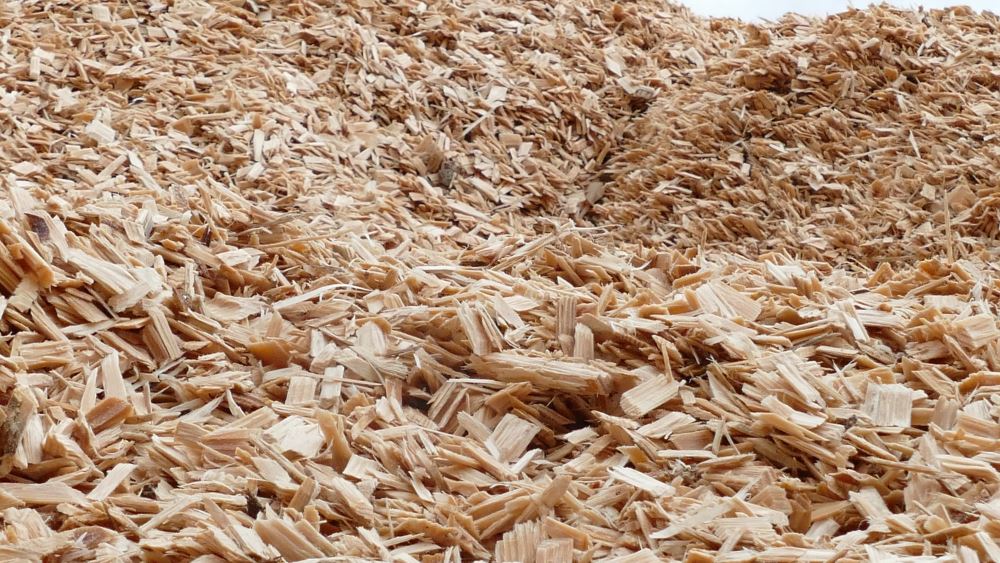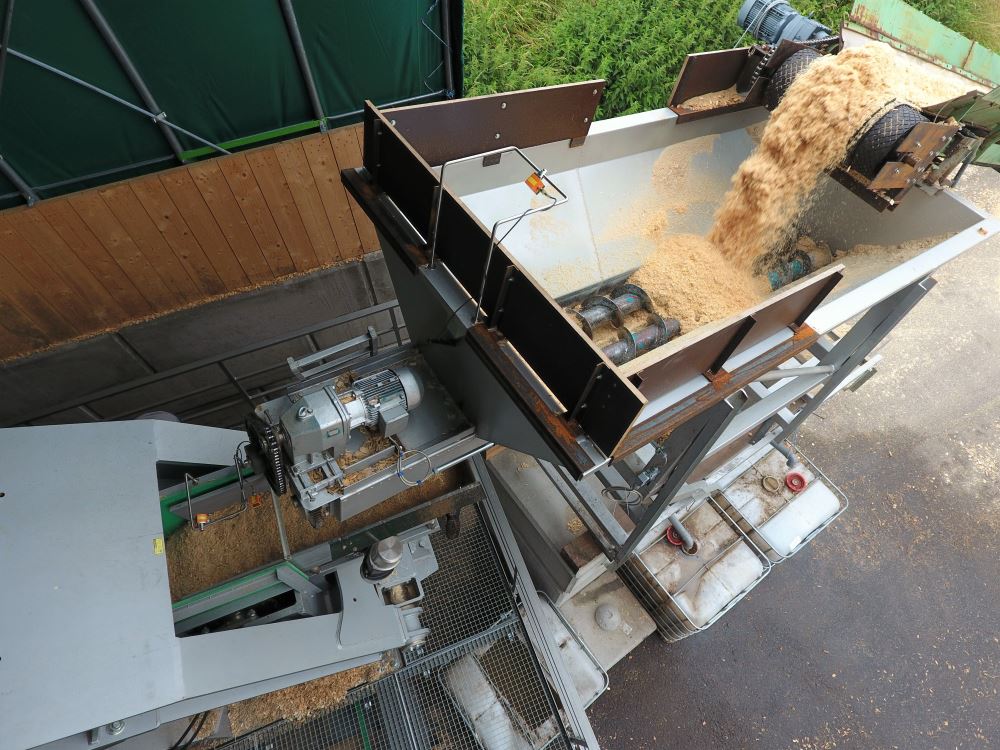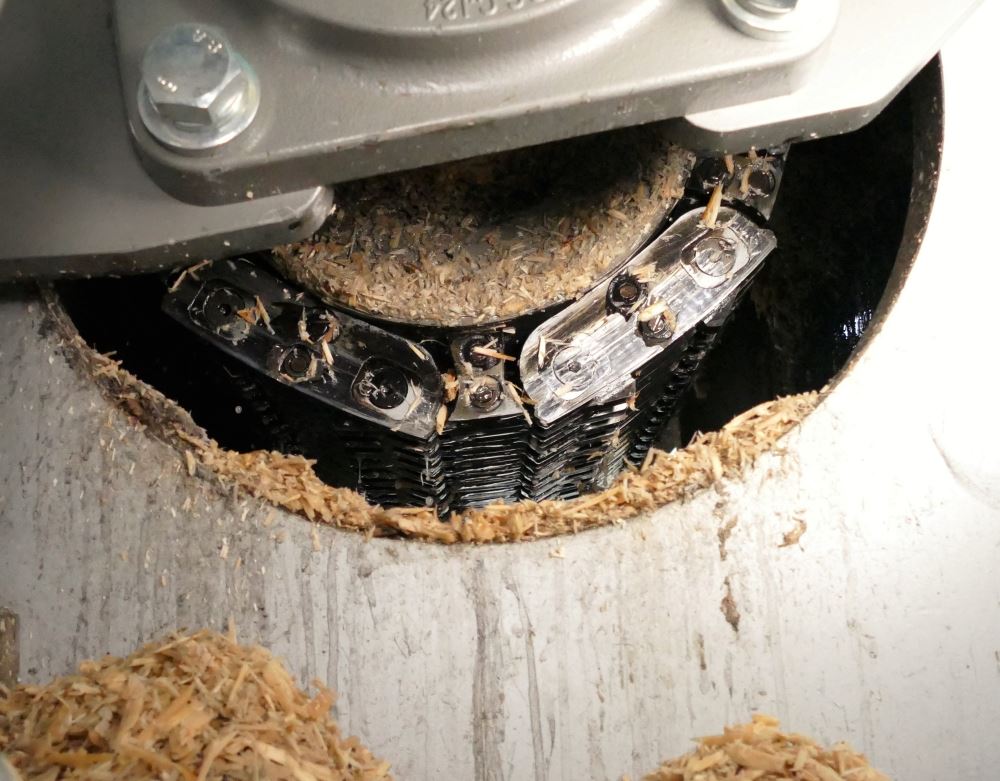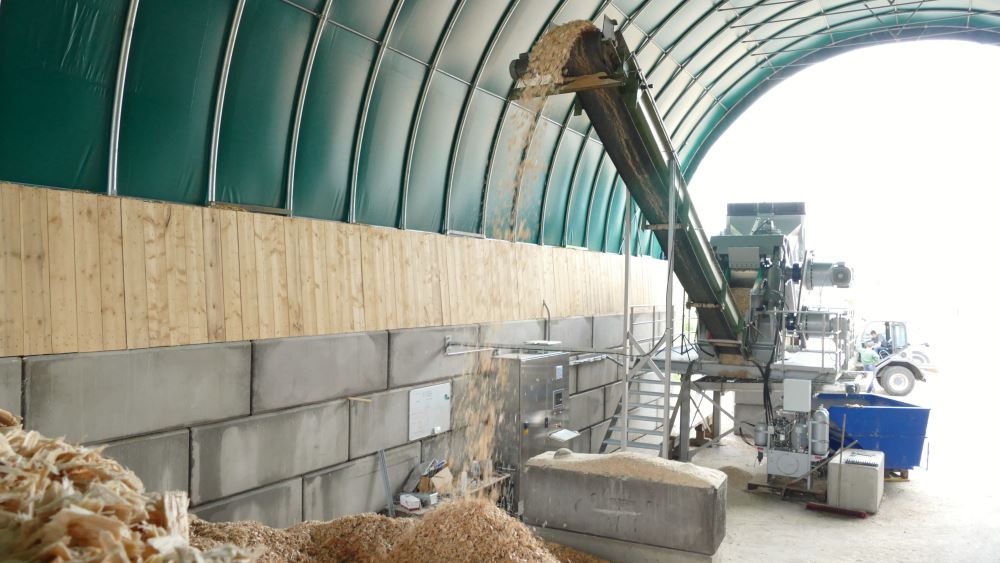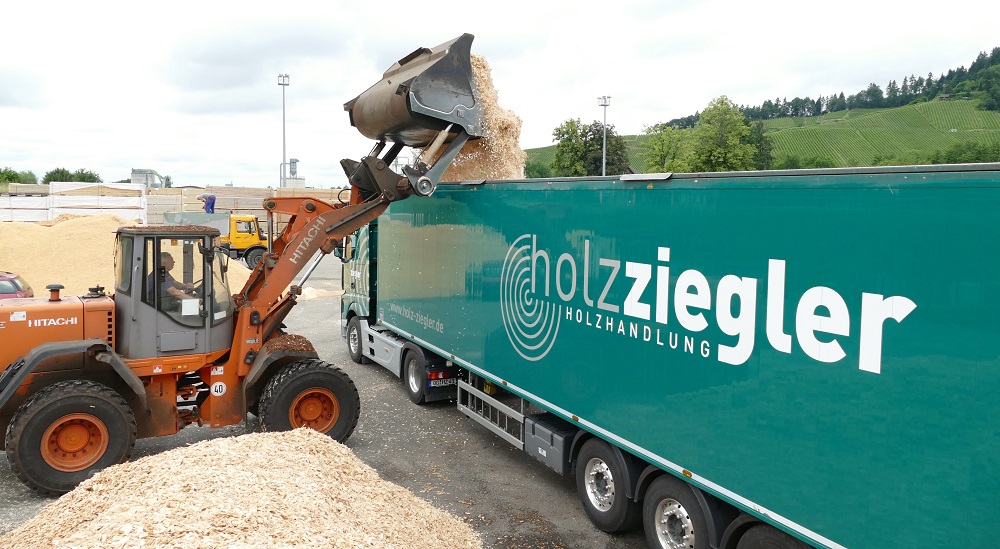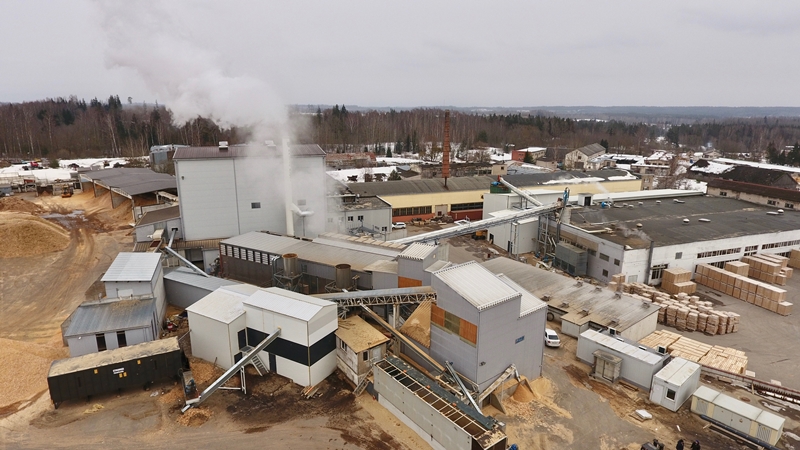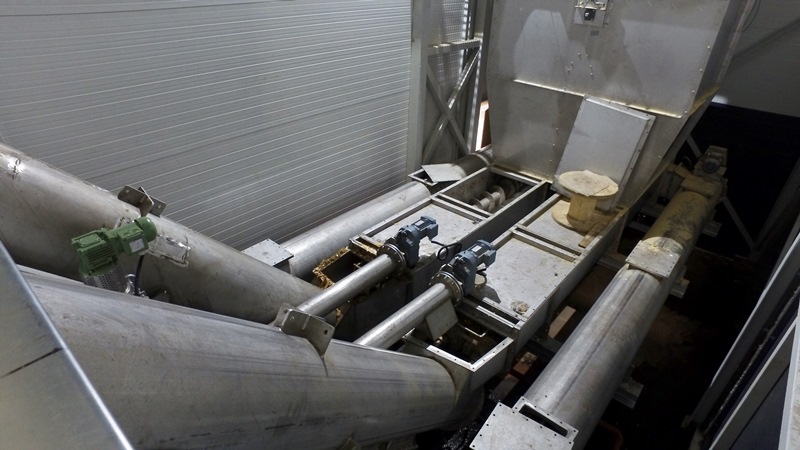Wood chips: a raw material and disposal problem in one
Where do wood chips come from?
Wood chips are produced on a grand scale in every sawmill in Europe. They are, just like sawdust, a by-product of the lumber cutting process. The tree trunk is turned into an initial standard square shape in the sawmill using large milling heads, known as chipper canters, and then cut using circular saws. In the process, over 30% of the volume of wood is machined into wood chips and sawdust. A large sawmill with an annual production of 1 million tonnes generates around 50 truck loads per day. A truck can hold approx. 80 - 100 bulk cubic metres. This means that up to 5000 cubic metres of wood chips are produced every day, equating to around 1500 tonnes that need to be meaningfully processed.
Wood chips are used as a raw material in manufacturing chipboard and compressed wood chip blocks, in the paper and pulp industry and as biogenous and renewable fuels. This happens partly through direct incineration in medium-sized and large plants and partly by processing the wood into pellets as fuel with a high heat value, which is particularly suitable for heating systems in private households.
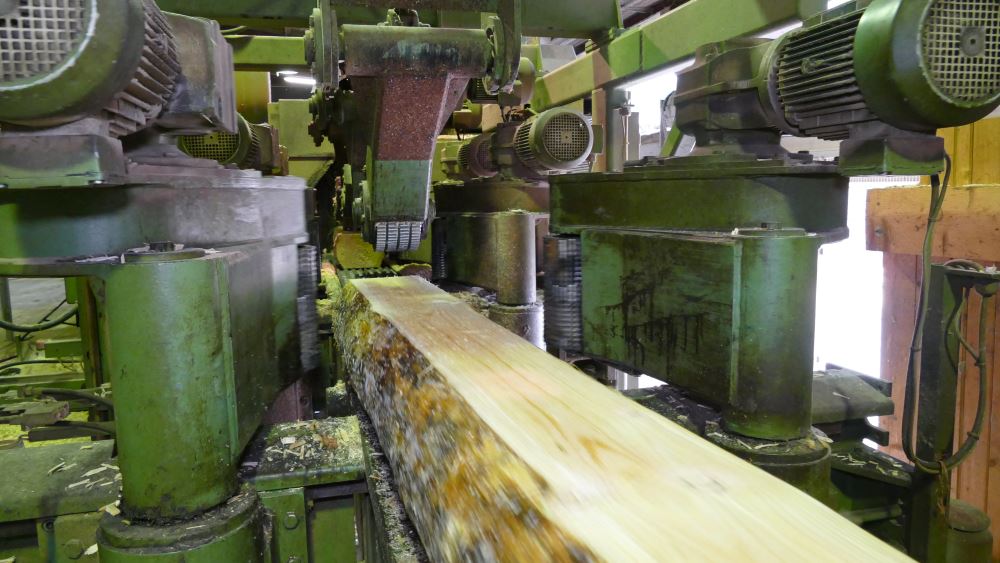
Why drying is necessary
In the case of freshly-harvested softwood, around half of the weight is water. This water compromises the ability of the wood to be stored (decomposition, formation of mould) and reduces its heat value.
The raw material needs to be almost completely dry for it to be further processed into wood chips or pellets. To do this, technical drying is essential, mostly with continuously operating horizontal belt dryers. The wood chips pass through a current of hot air on an air-permeable conveyor. With particularly wet wood chips the conveyor moves slowly, whereas pre-dried wood chips allow it to move more quickly. In practice, the hot air is frequently generated with natural gas or, depending on availability, with the help of locally available process heat.
For incineration, too, the wood chips must have a certain degree of dryness to achieve optimum combustion. With very wet wood chips an unnecessarily large proportion of the heating energy is consumed solely to evaporate the water. For this reason there is almost always an upstream drying process in wood chip firing plants. The drying is often achieved by storing the wood chips over a longer period of time, during which the pile heats up and dries through microbial activity. However, this type of drying results in a noticable loss of heating value.
